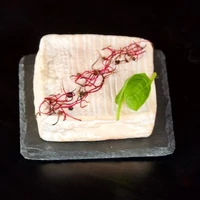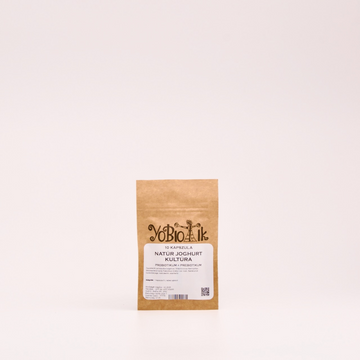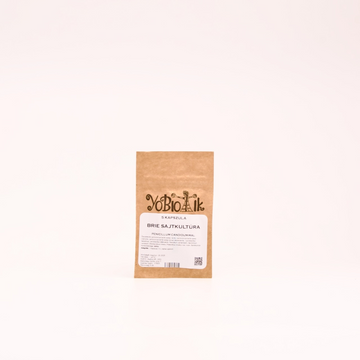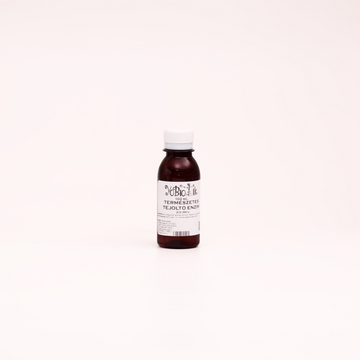I really like to make it, because it has the Italian temperament, the drive, the love, the feeling of life. It is really simple, does not require complicated procedures, expensive tools, and when it ripens...., it becomes a tasty delight under the caress of our hands.
Its homeland is the Italian province of Lombardy, specifically the valley of Val-Taleggio. It is usually rectangular, with a diameter of 18-22 cm, a height of 5-8 cm with a mass of 1.7-2.2 kg. It ripens with a soft, pinkish, orange rouge flora and thin white mold. Inside is a creamy, soft, the taste and smell is sweetish, fruity. Milk is processed raw, without pasteurization. In addition to the rouge culture, I also added white mold and geotrichum, which also serves to protect the rind. It protects cheese from foreign molds, creates a good medium for rouge flora. In the meantime, it gives me the playfulness that if I want to, I can completely wipe off the developing white mold every day, if I want to leave it thinly on it, or let it unfold completely. Either way, it's a really nice soft beer cheese, tea cheese! Any of the ripening methods will result in a very pleasant cheese that delights the eye and soul!
INGREDIENTS:
- 20 litres of raw cow's milk
- 2 capsules of natural yogurt culture and 1 capsule of brie cheese culture or vacherin cheese culture per 20 litres of milk
- 4 ml of natural rennet per 20 litres of milk
- 500 g rectangular cheese mould
- longer bladed knife, or curd slicer
1. CULTURING: I heat the fresh milk to 35-36°C, then add the prepared, dissolved cheese cultures. I mix it thoroughly, covering the pot. I let the cheese milk ripen with the culture for 30 minutes.
2. INOCULATION OF MILK: I add the rennet at 36 °C, which is also thoroughly mixed in the milk. I stop the movement of milk so that the clotting is even. I cover it and let the liquid milk turn into a solid curd. The milk already begins to clot after 10-15 minutes, but I leave it even longer, for a total of 30 minutes, so that my curd is good solid.
3. CUTTING OF CURDS: I check with my palm that the strength of the curd is correct. When the milk is nicely solid, I cut it into a 4 cm column. Here the cut is only two-way. I do the cutting with a curd slicer, in about 3-4 minutes. I cover it and rest the curd for 10 minutes. I'm waiting for the whey to come out to the surface. I continue to slice it to the size of a nugget of 2 cm in 5-6 minutes. You can also carry out this process with a long knife or cheese harp. Carefully, so as not to be too tiny in the size of the nuggets. It's a game of patience to cut, but it's a very important part of making cheese because it (also) indicates the cheese's good texture.
4. AFTER-HEATING: 15-20 minutes of slow stirring follow to solidify the curd even more. You can mix it with a curd mixer, or with a larger follower, or even by hand. It feels good to mix the lukewarm, delicate soft curd.
5. FORMATTING: I take it into a smaller or larger rectangular mould with plenty of whey. It's necessary to fill the mould full with the curd. After 10-15 minutes, I turn the cheese over for the first time. At this time, the curd is still very soft, it must be gently rotated. I almost don't even get it out from the mould, I just flip it nicely, gently with my fingers. This cheese does not need to be pressed. It will turn into soft cheese, so it is enough just to squeeze it by its own weight. By rotating, I help the whey to leave the cheese correctly: after 20 minutes, then 30 minutes, 60 minutes, 120 minutes and I always double the time between rotations. I rotate it for 16-18 hours, while the cheese turns off nicely. It is important that the temperature in the room is warm, 21-23 °C. Then it is ready for salting.
6. SALTING: I make a 20% salt bath. 20 dkg of non-iodized salt, I pour enough water at 15-16 degrees so that the total amount of solution is 1 kg. I mix it thoroughly. When the salt has dissolved, I put the cheese in it and soak it for 6-8 hours per kg of cheese. I'll turn it over once at halftime.
Or I salt it dry: sprinkled for 3 days, but not rubbing the entire surface of the cheese. In four days, what has not been absorbed by the surface of the cheese, I gently sweep off it.
7. DRYING THE SURFACE: Dry it for 1-2 days in an airy, cooler place at 19-20°C. Care must be taken to ensure that the rind of the cheese is not too dried when placed in the ripener.
8. MATURATION: Since I also mixed brie culture into the milk, a very exciting ripening period follows. I love it when I see it ripening, and it's almost in my hands that the cheese develops. Penicillium camemberti in culture grows white, soft flakes on cheese, Brevibacterium gives it an orange color. Sometimes I wipe off the white mold completely so that the rouge prevails better. But there are times when I let the white fur coat thicken so that the cheese ripens under it. Both will be delicious! Feel free to experiment. I put the cheeses in a ripening box to ensure that there is a tight vapor for ripening. Every day when I turn the cheese over, I wipe the accumulated excess water out of the box, because it is not good for the cheese to drip back on it.
The ripening temperature is 12-13 °C, humidity 80-85%.
Ripening period: minimum 21 days, but it can be up to 3-4 months, depending on the size of the cheese. By reducing the temperature, the ripening time increases!
HAPPY CHEESEMAKING! :)
 Lactic cultures
Lactic cultures
 Ingredients
Ingredients
 Cheese moulds
Cheese moulds
 Supplies
Supplies
 Kits
Kits






